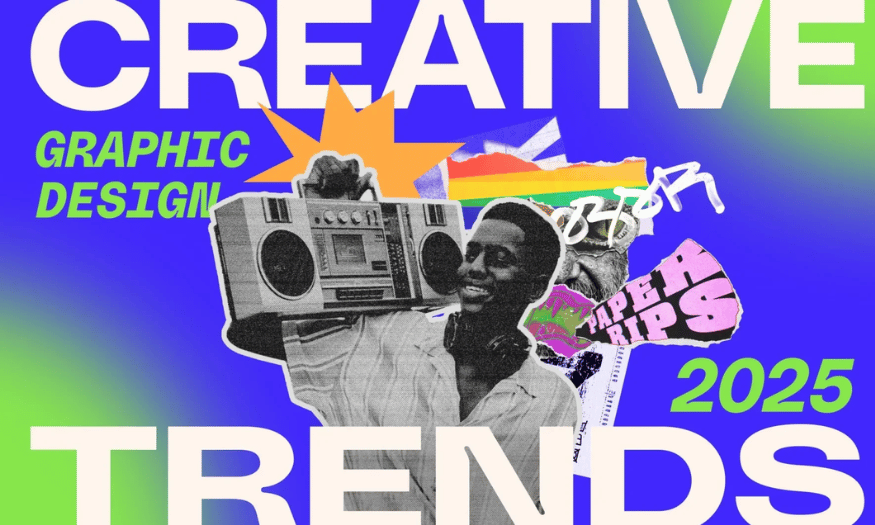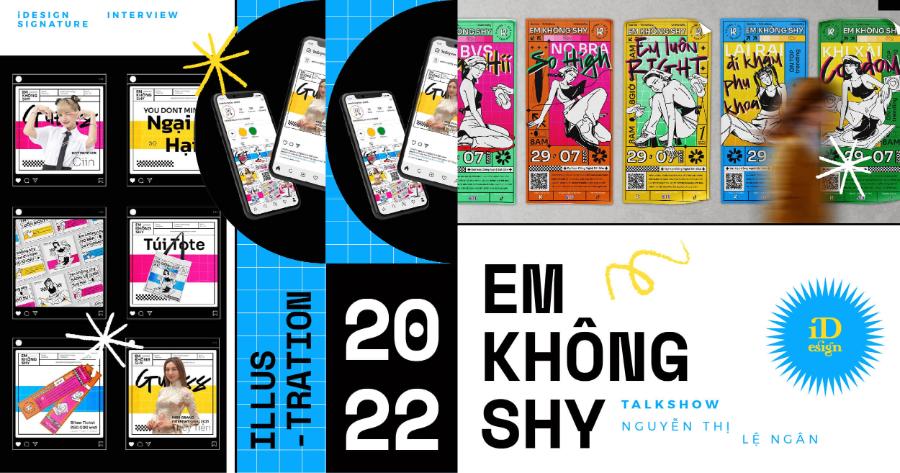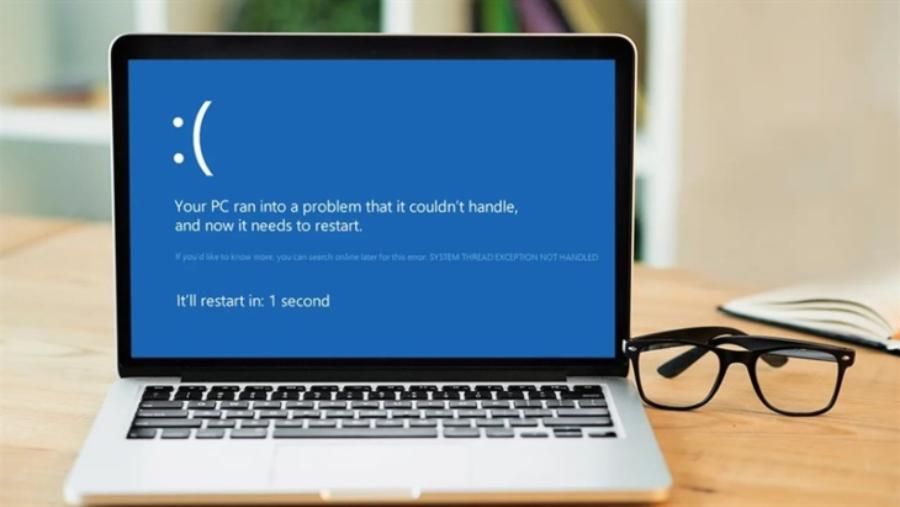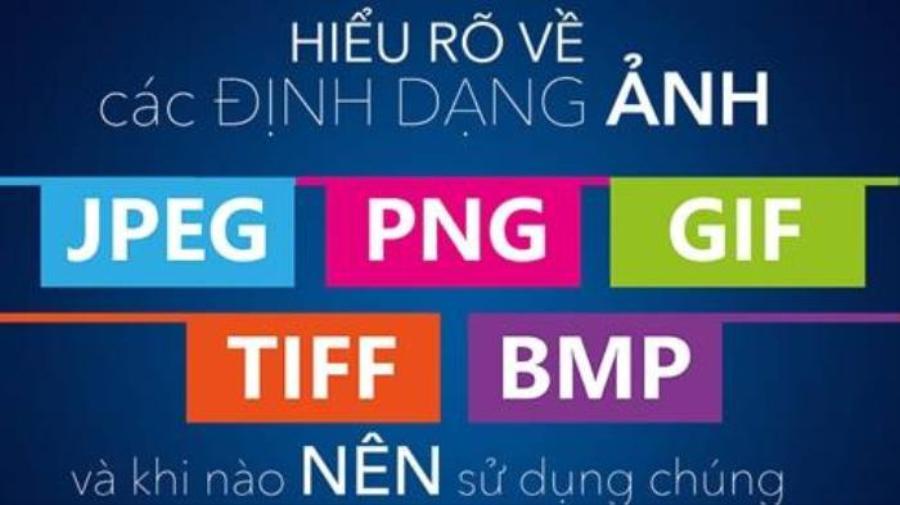Best Selling Products
See 8 Design Trends Now If You Don't Want to Be Outdated
Nội dung
Design trends are always changing rapidly, keeping up with the latest styles has become a vital factor for designers, businesses and creative enthusiasts. Design trends not only reflect current aesthetic tastes but also represent changes in society, technology and culture. If you don't want to be left behind in this field, let's explore 8 notable design trends this year, from minimalist styles to explosions of color and 3D images.

Design trends are always changing rapidly, keeping up with the latest styles has become a vital factor for designers, businesses and creative enthusiasts. Design trends not only reflect current aesthetic tastes but also represent changes in society, technology and culture. If you don't want to be left behind in this field, let's explore 8 notable design trends this year, from minimalist styles to explosions of color and 3D images.
1. Inspiration from human hands
In today’s technological age, where digital design is increasingly dominant, the trend of seeking the imperfections brought by human hands is becoming an interesting phenomenon. Design products are no longer simply perfect works made by machines, but instead are works with a strong personal mark, containing emotions and authenticity. Rough lines, asymmetrical details become symbols of a close and friendly lifestyle, where each work has its own story.
This trend is not just a reaction to the rise of artificial intelligence, but also a revolution in design thinking. Chad Edwards, Art Director at Envato, points out that the saturation of digital design has led many creatives to seek value from handmade products and cultural heritage. This is not only a tribute to the past but also a way to connect with the present and the future. Design is not just about creating products, but also about creating experiences, emotions and connections with viewers.
A typical example is artist Beci Orpin, who transforms familiar materials into unique, personal works of art. She shares that in the creative process, she not only uses materials but also creates memories and stories from herself. This trend encourages designers to go back to their roots, combining digital and manual techniques to create products that are both modern and traditional, thereby forming a design style that is sustainable and meaningful.
2. Design as “no design”
The “no design” trend is emerging as a powerful statement in the modern design world. The anti-design movement is not only a rejection of traditional design principles but also encourages freedom and individuality in creativity. It is a revolution where simplicity and rawness are celebrated, instead of polished and standardized products. This reflects the growing need for authentic connection in a world of information overload.
An example of this trend is Charli XCX’s “Brat” album, where the combination of bright neon colors and simple typography creates a unique and striking style. It is not only a work of art but also a declaration of creative freedom. Designers like Keiron Lewis assert that with the development of easy-to-use design tools, the “undesign” style will continue to grow and become an integral part of the industry.
This trend opens up opportunities for creatives to explore new things and push boundaries. The combination of glitch effects, unexpected shapes and random details can create unique and unpredictable products. This makes design fun and colorful, while encouraging endless creativity. “No design” is not just an approach, but a movement that aims to redefine the world of art in today’s digital age.
.png)
3. Minimalism and maximization
The contrast between minimalism and maximalism is not only a design concept but also an art. This trend shows that the combination of two seemingly opposite styles can create great works of art. Minimalism represents sophistication, simplicity and elegance, while maximalism brings brilliance, richness and prominence. When combined skillfully, they can create a design that is not only attractive but also meaningful.
Furniture company Chromas demonstrates this through its advertising campaigns, where bold typography and vibrant colors strike the perfect balance between the cleanness of minimalism and the vibrancy of maximalism. This shows that when elements are combined harmoniously, they can create impressive visual experiences. Chris Piascik, a renowned illustrator, also emphasizes the presence of the human hand in design as a response to the lifeless products that technology brings.
However, to achieve the perfect balance between minimalism and maximalism, negative space plays a very important role. Not only does negative space help soften the complexity, it also creates emphasis for other elements, making them stand out more. When handled delicately, negative space can become an integral part of the overall design, creating a harmony between elements without feeling cluttered. Minimalism and maximalism are not just a new approach but also an art, where creativity and emotion are put first.
4. Drawings instead of pictures
In the modern design landscape, illustration is becoming an attractive alternative to photography, not only in conveying messages but also in creating rich and emotional stories. Illustration is more than just creating images; it is an art form that allows designers to freely express their personal identity and creativity. This trend has opened up a wide space for creativity, where complex ideas are expressed in a more visual and intimate way.
Douglas Schneider, a pioneer in illustration design decades ago, demonstrated the power of hand-drawn imagery to create a deep connection between brands and consumers. His vivid depiction of fresh ingredients not only enhances the packaging of the product, but also creates a sense of intimacy and craftsmanship. This shows that, in a world saturated with digital images, illustration can evoke emotions that photography cannot.
The popularity of illustration over photography also reflects the growing consumer demand for authenticity and intimacy. Illustrations are not affected by excessive editing, but bring naturalness and flexibility in expressing ideas. Designers such as Filip Hodas have created unique works with surrealistic images, demonstrating unlimited creativity. The combination of illustration and photography also opens up new possibilities, creating works that are both realistic and artistic, giving viewers a rich experience.
.png)
5. Y3K
In contrast to retro trends that often look back to the past, Y3K looks to the future with a sharp, modern vision. This trend creates a wide space for exploration, where vibrant metallic colors and modern textures blend, creating a bold combination of pop culture and sci-fi style. The cyberpunk-inspired outfits of K-pop group Aespa are a living testament to the boundless creativity that Y3K brings.
Y3K is not just a design trend, but also a journey to explore the digital world through the lens of surreal images. Coca-Cola, with its new designs for the gaming community, cleverly used holographic effects and iridescent colors to convey the spirit of Y3K. This not only creates visual appeal but also brings a deep emotional experience to consumers.
The Y3K trend also represents a technological leap forward, with the use of AI-generated imagery. Distorted, abstract shapes and surreal landscapes not only stimulate the imagination but also create a sense of being lost in a new dimension where all boundaries can be broken. This opens up opportunities for designers to harness the power of AI creative tools, from creating vibrant 3D elements to complex motion graphics, to bring unique and groundbreaking ideas to life.
6. Multimedia experience
The fusion of traditional art and digital technology is creating a new wave of creativity in design, opening up many possibilities for expressing ideas in unique and engaging ways. Designers today are not only using photography or illustration, but also integrating different media such as hand drawing, collage and video to create vibrant works. This reflects the way we are constantly innovating to communicate messages more effectively.
Rob Janoff, the designer best known for the Apple logo, has said that the future of multimedia will be dominated by the combination of media. He sees a shift towards making images look impressive on smaller screens, which requires more creativity and interactivity. From the smallest details to the largest works, each element can have a powerful impact on the viewer.
In 2025, multimedia experimentation will be key to creating vibrant and engaging images. Enchi Saiko’s works, which combine hand-drawn drawings, still images, and videos, are prime examples of this fusion. The works not only bring visual effects but also create multidimensional experiences, engaging viewers through sight, touch, and sound. Collage art and multimedia experimentation not only enrich content but also create opportunities for designers to shape their own mark in the ever-changing art world.
.png)
7. The rise of design “teachers”
In today’s digital age, the rapid growth of social media platforms and technology has opened up a new opportunity for the emergence of “online teachers” or micro tutors. These individuals, often reputable micro-influencers in the design industry, not only provide concise and easy-to-understand lessons but also create a friendly and approachable learning space. They share their experiences with popular design tools such as Adobe Photoshop and Illustrator, helping followers quickly grasp the skills needed to develop in the design field.
These online teachers are not just imparting knowledge, but also inspiring and connecting the design community. According to Keiron Lewis, Design Manager at Envato, the rise of micro tutors on social media is attracting the attention of many young designers, making it easier for them to find new information and ideas. This not only helps personalize the learning process but also creates a rich environment for people to share and learn from each other.
Viviana Caponnetto, an Italian designer, is a prime example of this trend. She shares short tutorial videos on Instagram, making it easy for viewers to follow and apply new techniques. Similarly, Kristy Campbell has attracted attention from the creative community through her detailed videos about her branding process. These examples show that anyone can become a micro tutor, as long as they are passionate about sharing their knowledge and skills. This is a golden opportunity for design enthusiasts to not only learn but also contribute to the community.
8. The return of printing art
Printmaking is experiencing a resurgence, marking the return of traditional crafts and cultures to modern design. This trend not only reflects the appreciation for the value of craftsmanship but also brings a breath of fresh air to the design world that is currently dominated by digital technology. Classic printing techniques such as screen printing, offset printing and risograph are being loved and explored by young designers.
Keiron Lewis, a design professional, shares that he regularly practices experimental printing techniques such as screen printing and riso printing. These methods not only bring a handmade beauty but also create unique, intimate and authentic products. The resurgence of printmaking is not just a passing trend but also a reminder of the value of products made by human hands, with all the craftsmanship and dedication.
Printing techniques such as risograph, with their vibrant colours and irregular textures, have created limited edition prints that highlight the individuality and value of each piece. Each print is not just a product but also a work of art, bearing the personal stamp of the artist. The combination of traditional and modern printing techniques opens up many new creative opportunities, from offset printing to digital printing, each method brings a different experience and feeling.
.png)
9. Conclusion
These design trends are not just new styles, but also reflect changes in society, technology, and consumer needs. In order to not be left behind, designers and businesses need to quickly update and apply these trends to their work. Design trends are an important part of building a brand and creating memorable experiences for customers.












































